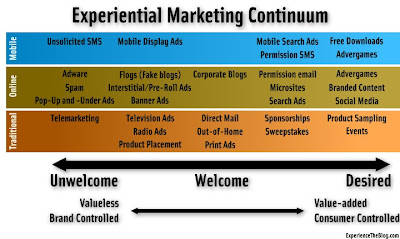Of course, television was social before we had social media. TV shows drove "water cooler" chatter since Lucy Ricardo gave birth to "Little Ricky"--71.7% of all American TV sets were tuned to "I Love Lucy" the night Lucille Ball's character gave birth in 1953. Crowdsourcing is not new to television, either; letter writing campaigns to save TV shows date back to at least 1968 when fans got NBC to renew "Star Trek" for another season. The fact TV viewing is innately social makes it the perfect match for today's social media and mobile technology.

The desire to join the conversation is a huge way social media is driving live TV viewership. What fun is it to tweet your love, shock or disappointment in an episode days after everyone else has seen it? Tweeting about last week's episode of Fringe makes as much sense as tweeting, "OMG, Mulder just told Scully that he loved her!" In our fast-moving world, it doesn't matter if it was last week or last decade--it's all ancient history as of this moment.
The power of real-time social media to drive TV viewership was demonstrated last year when Charlie Sheen made an 11th-hour appearance on CNN's "Piers Morgan Tonight." Though the show had almost no advance promotion, social networks lit up once the interview began, and 45 minutes into the show, viewership in the 25-to-54 demo was up 61%.
Networks are also encouraging real-time social media engagement with their shows by making stars and reality TV contestants available to fans. The competitors on The Voice are encouraged to tweet and connect with their fans, quite a change from when American Idol prevented contestants from having active Myspace pages or Twitter accounts. In addition, more and more networks are increasingly featuring stars in Twitter chats while their shows are broadcast.

Between GetGlue, Twitter, Facebook, blogs and boards, lots of us are talking about TV, and this is not just common among teens; in fact, according to Nielsen, people who talk about TV shows online skew older. The 25- to 34-year-old demographic accounts for just 17 percent of the overall social media population but is responsible for 29 percent of those on sites talking about TV.
All the check-ins, tweets and posts are having an effect. TV Guide's study found that 17 percent of respondents say they have started to watch a show and 31 percent say they have continued to watch a show because of a social impression.

In addition to driving attention and viewership in shows, TV networks are also using social media data to tweak their shows to be more appealing to viewers. The producers of the 2010 MTV Video Music Awards focused more attention on Lady Gaga after her meat dress became a trending topic on Twitter. Simon Cowell, who once criticized celebrities on Twitter by asking, "Why would you want to talk to people like that?", now uses audience feedback from Twitter to influence the format of The X Factor and tweets regularly at @simoncowell. New services such as Trendrr.TV are giving networks reams of data to measure viewer affinity not just for shows but also for granular attributes such as plotlines and characters.
The opportunities in Social TV will only continue to grow as more case studies demonstrate success. The 2012 Video Music Awards (VMAs) is one such success story. MTV pushed the #VMA hashtag using a Promoted Trend and on-screen text during the broadcast. It also hosted an online “Twitter Tracker” site during the award ceremony and displayed the results during commercial breaks to attendees in the theater to encourage their participation online. MTV's microsite even featured a seating chart of the theater to see the spots from which celebrities were tweeting.
The social promotion effort worked. Twitter saw over 10 million VMA Tweets, and the Promoted Trend had a 16% engagement rate, driving 27 times the average mentions of MTV’s Twitter account and adding 128,000 new followers to MTV’s Twitter account on the day of the event. The social media activity contributed to the success of the 2012 VMAs broadcast--it was the largest audience ever for any telecast in MTV’s history.
How will social TV continue to evolve and change television? That is like a season-ending cliffhanger: You will just have to tune in next season to find out.


